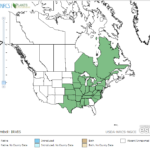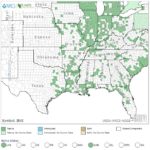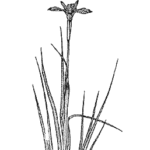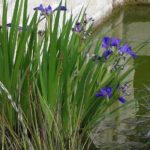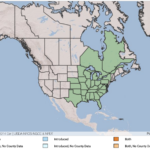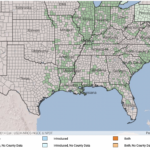Iris virginica
USDA, NRCS. 2018. The PLANTS Database (http://plants.usda.gov, 28 March 2018). National Plant Data Team, Greensboro, NC 27401-4901 USA.
Illustration courtesy of University of Florida/IFAS Center for Aquatic and Invasive Plants. Used with permission.
What is Blue Flag?
Other common spellings and names include: Virginia iris, great blue flag, Southern blue flag.
Physical Characteristics
Leaves:
- Limp
- Arched or falling to the ground
Flowers:
- Blue
- Bloom in May
3 Outer Sections of Petals:
- Oval- or egg-shaped
- 1.06-1.5 inches wide
- Distinct yellow midrib
3 Inner Sections of Petals:
- Egg-shaped
- 2/5th – 4/5th as large as sepals
Fruit:
- Dry
- Cylindrical- or elliptical-shaped
- 1.06-4.39 inches long
- 0.5-1 inches thick
- 3-angled
- Often asymmetrical
- Brittle wall
- Dull, rarely shiny on inner surface
- Breaks down early
Seeds:
- Rounded or irregularly “D”-shaped
- 0.13-0.25 inches thick
- 0.2-0.31 inches wide
- Deep-pitted, brittle coat
Stem:
- Weak
- Up to 3 feet high
- Simple or somewhat branching
- Low-arching
- Maturing fruit in water
- Bracts firm, up to 5.5 inches long
Where Does it Grow?
Blue flag can be found in marshes, wet savannas, pinelands, shallow water in ditches and in soggy meadows.
Pros and Cons of Blue Flag
Submerged portions of all aquatic plants provide habitats for many micro and macro invertebrates. These invertebrates in turn are used as food by fish and other wildlife species (e.g. amphibians, reptiles, ducks, etc.). After aquatic plants die, their decomposition by bacteria and fungi provides food (called “detritus”) for many aquatic invertebrates.
